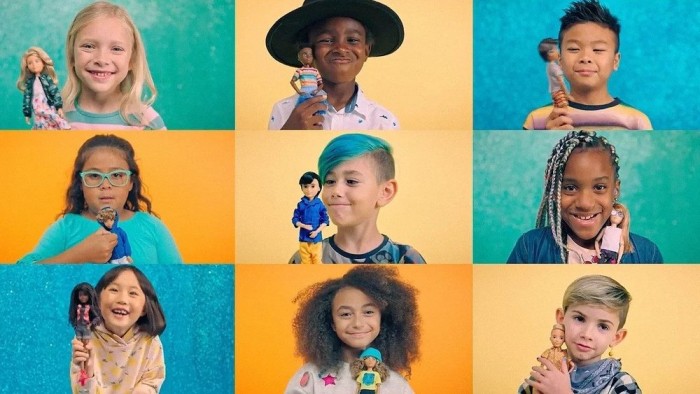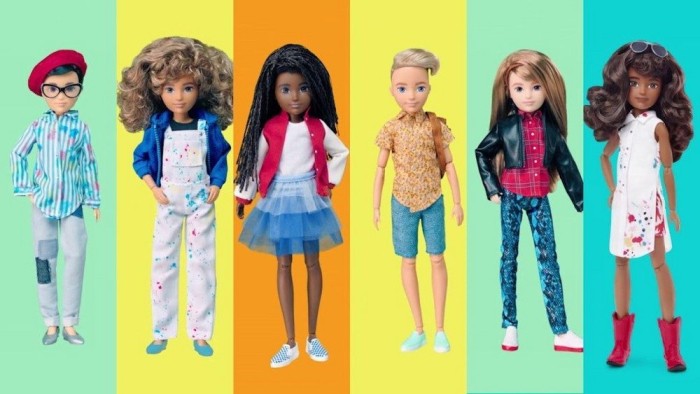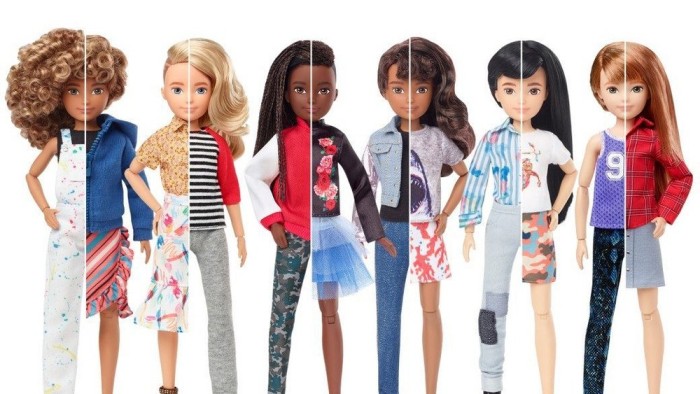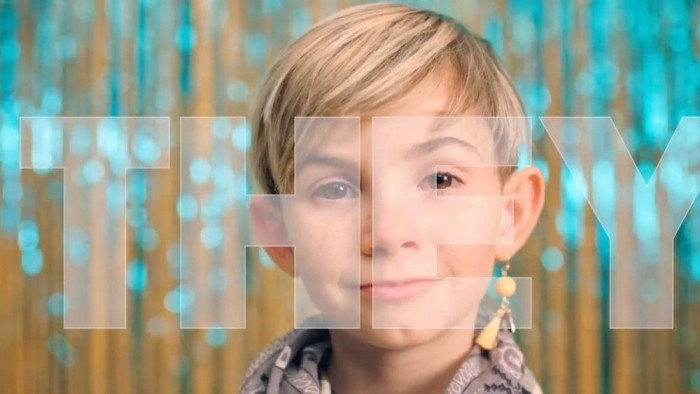Insight & Strategy | Mattel: Creatable World
Why a toy maker decided to remodel conventions with a genderless doll range
This article was originally published in Contagious I/O on 2 December 2019
Share this post
Last month, Contagious covered Barbie manufacturer Mattel’s launch of its new line of gender-inclusive dolls, the Creatable World range.
The line, consisting of a total of six different dolls with gender-neutral physiques, is available in a variety of skin tones and was created together with a team of experts, parents, physicians and children.
Creatable World was advertised via sneak previews revealed by selected influencers and leaders in the LGBTQ+ community, with a promotional spot featuring kids using various pronouns under the slogan: ‘A doll line designed to keep labels out and invite everyone in’.
To find out more about the thinking behind the doll and why it works, Contagious spoke to Kim Culmone, Mattel’s senior vice president and global head of design at Barbie and Fashion Dolls, who also heads up the team behind Creatable World.

What was the inspiration behind the Creatable World product range?
The process was actually listening to consumers: we spent a lot of time in conversation with children, parents. Ultimately, toys are a reflection of our culture and as the world is continuing to celebrate all the positive impact of inclusivity, what we were hearing from parents and kids was that they are increasingly struggling with genderising the toys they play with. And you know what? Kids don't want to be dictated to about how to play or be told what they're allowed to play with. So, we saw whitespace within the fashion doll market in particular and an opportunity to create the world’s first gender-neutral fashion doll.

So the target audience is children yet it is parents who have to buy them. What shifts have there been in parent-consumer behaviour that inspired this product?
We increasingly see younger generations of parents shifting perceptions around what gender norms are. So, I see an increasing openness, and concern frankly, from parents about how products dictate to their kids play when it comes to gender and inclusivity. It’s top of mind for young parents today.
What about the challenges?
It’s mostly a generational thing. We recognise that not everyone is in this in this open mind space: and that's okay. We have a fantastic portfolio of dolls that offer lots of options for parents. However, fundamentally, this is about providing a play experience that kids told us they wanted.
Our process is actually listening to consumers. - Kim Culmone, Mattel
Are any of your competitors doing anything like this?
At a mass level, I am unaware of any fashion doll like that is gender-neutral and acts as a blank canvas for children to then map on their own genderless fashion styles and expressions within a single doll. So right now, no.
What are the benefits of such a doll?
It means that there are more storytelling options. Going back to the fundamental play of what fashion dolls are which is that that they are tools for storytelling, narrative and for developing creativity and self-expression. When you create a blank canvas without a prescribed narrative, it really taps into the creative developmental benefits that these dolls can provide.

What is the process of developing a product? Can you map it out for us?
Every year, we try to explore uncharted territory. So it’s difficult to isolate the exact starting point for this because we are in continuous exploration with our consumers. In fact, we spend time with kids. At the very least, twice a week my team in conversation and play with children. It’s in these sessions where we get indications of what they're looking for and what the gaps are in the market. One of the main things for kids is being able to do what they want to do with the toys, which is one of the reasons why this idea works.
A the values of diversity and inclusivity gain traction, this was a space that opened to us. So, it started with kids, then us observing and playing with the kids, and then splitting into groups with prototypes to see if our hypothesis around the gender-neutral/inclusive offering works.
From there we go into a development cycle where we ask ourselves: ‘Ok what does that look like?’ So the question becomes: ‘how do you create a doll kit that is gender-neutral and allows kids to create whatever sort of doll character they want?’ The design process then involves sculpting the body, the face (how can you create a wardrobe that allows you to express the gender spectrum as well) and details really matter. There's a lot of research and exploration and testing and then analyzing the responsiveness to that testing within that process.
When you create a blank canvas without a prescribed narrative that is predetermined, it really taps into the creative developmental benefits that these dolls can provide. - Kim Culmone, Mattel
How do you measure a child’s response? What are you looking for?
Fortunately for us, it's pretty obvious when you're in a room with a kid what they're interested in what they're not interested in. The kids that we were talking with were a little bit older, so they were actually able to express to us: ‘I really like this’ or ‘It's not something I've seen before’ or ‘These are dolls that look like they're closer to my age or ‘They look like me and my friends.’
We were told not to be so specific in the items that we were putting into the doll set. So put in clothes that are masculine as well as feminine, and not stuff that looks like something their parents would wear. Kids are extraordinarily savvy, and so there usually isn't too much of a mystery into what they like or don’t like.
The dolls are androgynous like kids are before they turn to adults. Why is this aspirational for kids?
To think that kids today only have aspirations to become adults is a really incorrect assumption to make. They are not necessarily aspiring to be grownups, they are aspiring to be slightly older than they are or being exactly who they are - exploring their own age demographic and telling their own stories, creating their own narrative and play experiences in the process.

How do you ensure that what you do is on the societal pulse as it were?
Speaking specifically for our design team, we're human beings of a diverse background, living in the world just as everyone else is. Designers are like sponges of information, and we talk about what is going on in our own lives and in our world around us. We have people in their 20s on my team and people in their 60s, so we have a very broad generation of human beings. That’s really where it starts with designers, through lived experience and then really committing ourselves to get into the hearts and minds of our consumers and spending time with them. We can have all the greatest hypotheses in the world but if we don’t spend time testing them we will never know.
Is there a tipping point, when you know its time to react to trends?
It takes our development cycle about a year - we can go a little bit faster, we can accelerate - but with Creatable World, for example, we debated about for two years. The thing with toys is that we are a reflection of what's happening in the world, and it's important for us to get that timing right. And I think Creatable World is being launched at just the right time when the world is beginning to shift in our consciousness around these subjects.
So what’s next?
I have long committed to not even guessing what is going to come next! The world is changing so rapidly. All I can say is that I know Mattel and our fashion doll portfolio will stay at the forefront of that.


